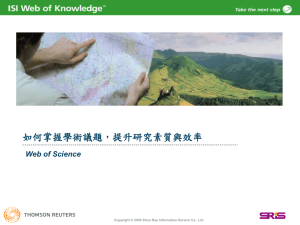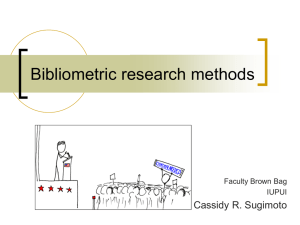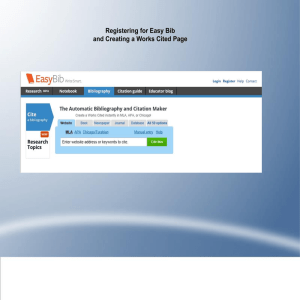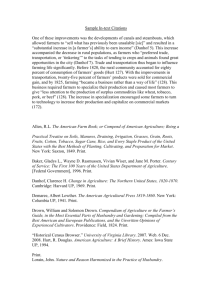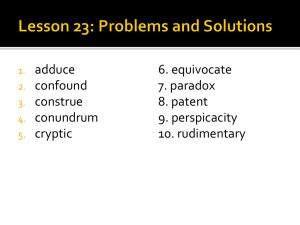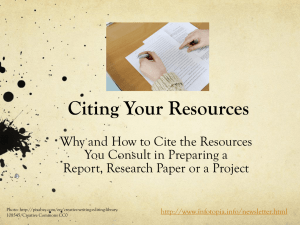Id - University of Baltimore School of Law
advertisement
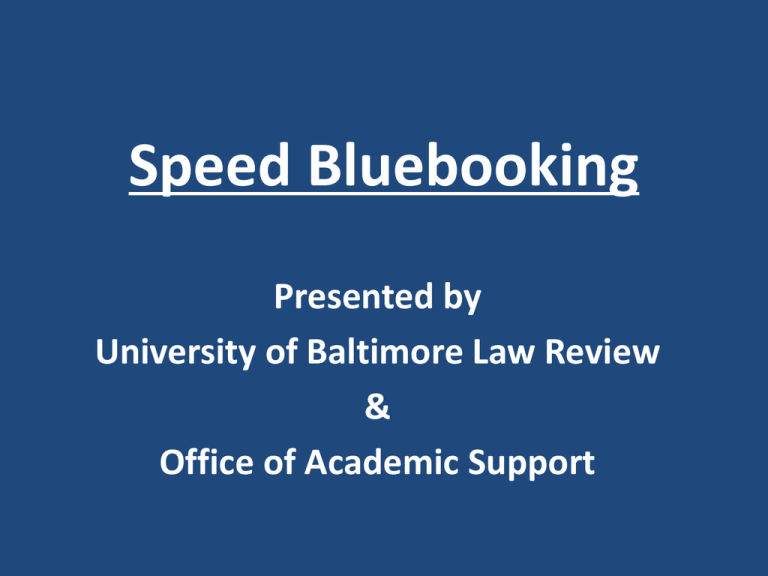
Speed Bluebooking Presented by University of Baltimore Law Review & Office of Academic Support The Bluebook • Four Major Parts: 1. Bluepages 2. Rules of Citation & Style 3. Tables 4. Index Basic Tips • • • • • • Remember the function of a citation Look up every rule, every time When in doubt, start with the Index Read the entire rule at least once Tables contain rules DON’T COPY A DATABASE CITATION! The Bluepages • Use the Bluepages for typeface & style issues particular to memos – B1 for typeface – B2 for citation placement The Rules (White Pages) • Use the BB Rules for formatting citations (punctuation, how to order citations, etc.) – Rule 1 – Signals – Rule 4 – Short Citation Form – Rule 10 – Cases – Rule 12 – Statutes – Rule 18 – Internet Sources Common Errors: Rule 10 – Cases • Improper Abbreviations – Use Table 6 & Table 10 – Different in citation vs text • B4.1.1/Rule 10.2 – Similar abbreviations for different words • Employee and Employment (Emp. and Emp’t) • Associate and Association (Assoc. and Ass’n) • Center and Central (Ctr. and Cent.) Common Errors: Rule 10 – Cases • Maryland cases must contain parallel cites – Rule 10.3.1(a) • Boy v. Girl, 379 Md. 58, 59, 458 A.3d 38, 41 (2009). • Reporter spacing – Rule 6.1(a): • N.W.2d (no spaces) • F. Supp. 2d (spaces) • Use the short form! – Rule 10.9 Common Errors: Rule 10 – Cases • Parenthetical information – Weight of Authority • Rule 10.6.1 – Boy v. Girl, 123 U.S. 456 (2012) (Stevens, J., dissenting) – Quoting vs not quoting • Rule 1.5(a) – (“The arsonist had oddly shaped feet.”). – (stating that the arsonist had “oddly shaped feet”). – Citation within a citation • Rule 10.6.2 Rule 1.6(c); Rule 2.2(b)(iii) – Parenthetical containing a case citation Simplifying Signals: Rule 1.2 • Supportive Signals – [no signal] – E.g., – Accord – See – See also – Cf. • Comparative Signals – Compare … with … • Contradictory Signals – Contra – But see – But cf. • Background Signals – See generally Simplifying Signals: Rule 1.2 – [No signal] = assertion comes directly from this cited source • Contradictory signal = Contra – E.g., = assertion comes directly from multiple sources, one of which is this cited source – Accord = text quotes/refers to another source, but assertion is also stated in/supported by this cited source – See = assertion is not directly from this source, but is clearly supported by this cited source • Contradictory signal = But see – See also = assertion comes directly from previous source, but it is also supported by this cited source – See generally = general background material for assertion can be found in cited source – Cf. = a proposition different than but analogous to assertion is supported by this cited source • Contradictory signal = But cf. Simplifying Signals: Rule 1.2 • String Cites – Multiple sources linked to the same signal or same TYPE of signal (supportive, comparative, contradictory, or background) are separated by a semi-colon • See UB Law Review v. UMD Law Review, 459 U.S. 268, 271 (2010); Lande v. Breyer, 458 U.S. 11, 12 (2009). – Be sure to place sources in correct order • Based on signal Rule 1.3 and B3.5 • Based on authority Rule 1.4 Common Errors: Rule 4 – Short Form • Id. Rule 4.1 – Italicize the “.” in Id. – Only add page numbers after “id.” if the pincite is different • Id. or Id. at 3. – Id. § 5. Not: Id. at § 5. – Do not use id. if you cited more than one authority in previous cite. Common Errors: Rule 4 – Short Form • Short Citation Form for Cases – Rule 10.9 – B4.2 tells you when you can use the short form – Pick one party’s name and stick with it; make sure the reader can figure out which case you are referring to. • Rule 10.9(b)(ii) for parallel citations with “Id.” – Id. at 356, 233 A.2d at 563. • See B4.2 for parallel citations with short forms – Jones, 435 Md. at 25, 245 A.3d at 38. Common Errors: Rule 18 – Internet Sources • Direct citations vs. parallel citations – Citing CNN.com vs. The Baltimore Sun • Use “available at” for the latter, never for the former. • See Rules 18.2.2, 18.2.3 & 16.6(f) • If the Web site does not list a publication date, use a “last visited” parenthetical when no date provided; update this every time you view the webpage – Rule 18.2.2(c). Other Helpful Rules • Citing a Restatement? Rule 12.9.5 • Uniform Code? Rule 12.9.4 • Capitalizing the word “court” B7.3.1 – Only capitalized when referring to SCOTUS or the court that will receive the document. • Case names in memos B1 – Underscore or italicize case names in the text of your memo • Multiple sections Rule 3.3(b) – Use §§ when referring to multiple sections • Citing a footnote? Rule 3.2(b) Other Helpful Rules • Quotations Rule 5 – Pay attention to long quotes and alterations – Do not indicate emphasis in original • Numbers and Symbols Rule 6.2 – The first word of any sentence must be spelled out • Foreign phrases Rule 7 – Italicizing foreign phrases such as certiorari, res judicata, etc. – Don’t italicize the common phrases • Unreported Opinions B4.1.4; Rules 10.8.1 & 18.3.1 • Court documents/Case record B7 • No bluebook rule for source? Use analogous source Final Tips & Things to Remember • When in doubt, use the Index • Always check the tables for abbreviations • Check the inside back cover for examples of commonly used citation forms used in court documents / legal memos (Bluepages) • Check the inside front cover for examples of commonly used citation forms used in journals (White Pages)


